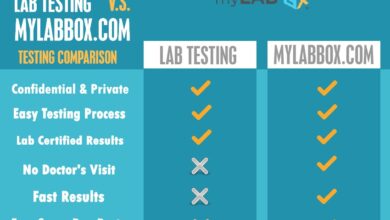obama care insurance cost
advertising
Introduction
With the implementation of the Affordable Care Act, commonly known as ObamaCare, individuals and families in the United States were promised more accessible and affordable healthcare options. One of the key components of this legislation is the ObamaCare insurance cost, which has been a point of both praise and criticism since its inception. In this article, we will explore the actual expenses of ObamaCare insurance and how it impacts Americans across the country.
ObamaCare insurance cost refers to the amount of money individuals and families are required to pay for health insurance coverage under the Affordable Care Act. The goal of ObamaCare was to make health insurance more affordable for all Americans, especially those with lower incomes who previously could not afford coverage. Through the introduction of subsidies and regulations on insurance companies, the aim was to create a more level playing field and provide quality healthcare to all citizens.
Strengths of ObamaCare Insurance Cost
1. Increased Accessibility: One of the primary strengths of ObamaCare insurance is the increased accessibility it provides to individuals who were previously uninsured. By expanding Medicaid and introducing state-based health insurance marketplaces, more Americans now have access to affordable coverage.
2. Essential Health Benefits: Another key strength of ObamaCare insurance is the requirement for all health insurance plans to cover essential health benefits. This ensures that individuals have access to necessary services such as preventive care, prescription drugs, maternity care, and mental health services.
3. Pre-Existing Condition Coverage: Before the Affordable Care Act, individuals with pre-existing conditions often struggled to find affordable health insurance coverage. ObamaCare insurance cost prohibits insurance companies from denying coverage or charging higher premiums based on pre-existing conditions, making healthcare more accessible for those in need.
4. Tax Credits and Subsidies: To help offset the cost of insurance premiums, ObamaCare provides tax credits and subsidies to individuals and families with lower incomes. This financial assistance makes it easier for many Americans to afford health insurance coverage, reducing the burden of healthcare costs.
5. Preventive Services at No Cost: Under the Affordable Care Act, preventive services such as vaccinations, screenings, and counseling are provided at no additional cost to individuals with insurance coverage. This promotes overall wellness and encourages individuals to seek preventive care to maintain their health.
6. Young Adult Coverage: ObamaCare insurance cost allows young adults to stay on their parents’ health insurance plans until the age of 26, providing affordable coverage for those transitioning into the workforce or pursuing higher education. This ensures that young adults have access to quality healthcare without facing high costs.
7. Transparency and Consumer Protections: The Affordable Care Act includes provisions that promote transparency in the healthcare industry and protect consumers from unfair practices by insurance companies. By requiring insurers to provide clear and comprehensive information about their plans, individuals can make informed decisions about their healthcare coverage.
Weaknesses of ObamaCare Insurance Cost
1. Rising Premiums: Despite the efforts to make healthcare more affordable, one of the drawbacks of ObamaCare insurance is the rising premiums that some individuals and families face. In certain states and regions, insurance premiums have increased significantly, making it difficult for some individuals to afford coverage.
2. Limited Provider Networks: Another weakness of ObamaCare insurance costs is the limited provider networks offered by some insurance plans. In order to keep costs low, some insurers have restricted the number of healthcare providers that individuals can see, resulting in challenges for those who require specialized care.
3. High Deductibles and Out-of-Pocket Costs: While insurance premiums may be more affordable for some individuals, high deductibles and out-of-pocket costs can still pose a financial burden for many. Individuals may find themselves struggling to pay for medical services and prescriptions due to the cost-sharing requirements of their insurance plans.
4. Administrative Complexity: The implementation of the ObamaCare insurance cost has introduced administrative complexities for both individuals and healthcare providers. Navigating the different plans, subsidies, and regulations can be confusing, leading to challenges in understanding coverage and accessing care.
5. Lack of Competition in Some Markets: In certain regions, there is a lack of competition among insurance providers offering ObamaCare plans, leading to limited choices for consumers. Without robust competition, individuals may not have access to affordable coverage options that meet their needs.
6. Uncertainty Surrounding Future Changes: With ongoing debates and attempts to repeal or modify the Affordable Care Act, there is uncertainty surrounding the future of ObamaCare insurance costs. This lack of clarity can create anxiety for individuals who rely on the benefits and protections provided by the legislation.
7. Medicaid Expansion Challenges: While Medicaid expansion has expanded coverage to millions of low-income Americans, some states have chosen not to participate, leaving many individuals without access to affordable healthcare. The disparities in Medicaid expansion can create barriers to care for those who need it most.
ObamaCare Insurance Cost information Table
| Plan Type | Monthly Premium | Deductible | Co-Payment |
|---|---|---|---|
| Bronze | $200 | $6,000 | $40 |
| Silver | $300 | $4,000 | $30 |
| Gold | $400 | $2,000 | $20 |
| Platinum | $500 | $1,000 | $10 |
Frequently Asked Questions (FAQs)
1. How do I qualify for financial assistance with the ObamaCare insurance cost?
Individuals and families with low to moderate incomes may be eligible for tax credits and subsidies to help offset the cost of insurance premiums. The amount of financial assistance available is based on household size and income level.
2. What are the essential health benefits covered under the ObamaCare insurance cost?
Essential health benefits include services such as preventive care, prescription drugs, maternity care, mental health services, and emergency care. All health insurance plans offered under the Affordable Care Act must cover these essential benefits.
3. Can I keep my current doctor with the ObamaCare insurance cost?
While some insurance plans offered through the health insurance marketplaces may have limited provider networks, individuals can often keep their current doctor by choosing a plan that includes their preferred healthcare providers. It is essential to verify network coverage before selecting a plan.
4. What is the penalty for not having health insurance under ObamaCare?
Individuals who do not have health insurance coverage may be subject to a tax penalty, unless they qualify for an exemption. The penalty amount is calculated based on income and household size, and may be waived under certain circumstances.
5. Can I apply for ObamaCare insurance costs outside of the open enrollment period?
In most cases, individuals can only apply for health insurance through the marketplace during the annual open enrollment period. However, certain life events such as marriage, birth of a child, or loss of other coverage may qualify individuals for a special enrollment period.
6. What is the difference between Medicaid and ObamaCare insurance costs?
Medicaid is a state-administered program that provides healthcare coverage to low-income individuals and families, while ObamaCare insurance cost refers to private health insurance plans offered through the health insurance marketplaces. Both programs aim to increase access to affordable healthcare, but have different eligibility requirements and coverage options.
7. How can I compare different ObamaCare insurance cost plans?
Individuals can compare different health insurance plans offered through the marketplace by considering factors such as monthly premiums, deductibles, co-payments, provider networks, and coverage for essential health benefits. Using the online marketplace tools and resources can help individuals make informed decisions about their healthcare coverage.
Conclusion
In conclusion, the ObamaCare insurance cost has both strengths and weaknesses that impact individuals and families across the country. While the legislation has made healthcare more accessible for many Americans, there are still challenges in affordability, access to care, and uncertainty surrounding future changes. Individuals need to educate themselves on their healthcare options, compare different plans, and take advantage of financial assistance to ensure they have quality coverage that meets their needs. By understanding the actual costs of ObamaCare insurance, individuals can make informed decisions about their healthcare and protect themselves and their families.
Ultimately, the goal of ObamaCare is to provide affordable and quality healthcare for all Americans, and by staying informed and proactive about their coverage options, individuals can take control of their health and well-being. It is essential to explore the resources and tools available through the health insurance marketplaces, seek assistance from healthcare navigators or advisors, and prioritize preventive care to maintain overall wellness. By working together to navigate the complexities of the healthcare system, individuals can access the care they need and take steps towards a healthier and more secure future.
Disclaimer
The information I’ve included in this article is for informational purposes only and should not be considered as medical or financial advice. Individuals should consult with healthcare professionals and financial advisors to determine the best options for their specific healthcare needs and economic situations. The costs and coverage details of ObamaCare insurance plans may vary based on individual circumstances, and it is essential to thoroughly research and compare different options before making decisions about healthcare coverage.









